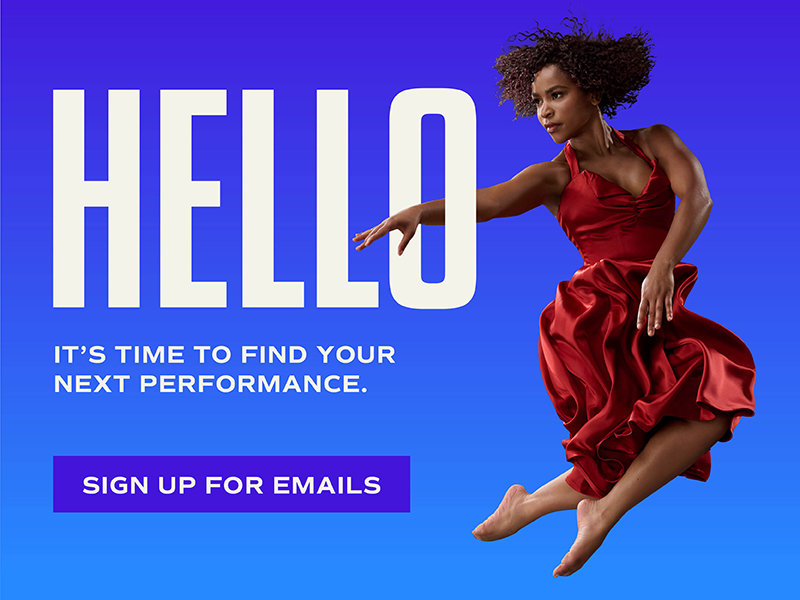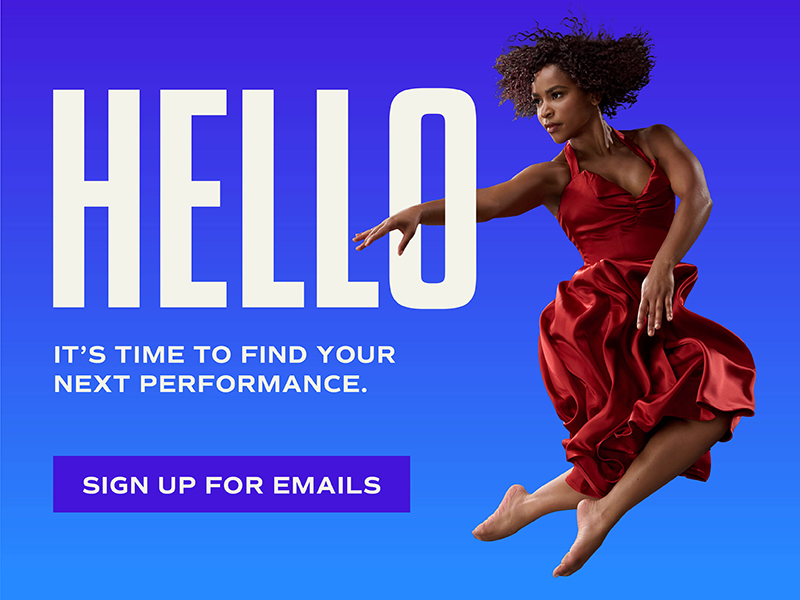One Year On
Special Features Virtual Stage

One year into our own generation’s challenge, we can begin to reflect on this tumultuous time and consider the many struggles but also the opportunities that have been realized because of this unprecedented situation. In a year when our nation grappled with the twin pandemics of COVID-19 and systematic racism, we were given an opportunity to ponder our role as arts providers and respond to national circumstances by delivering these programs in innovative and truly inclusive ways.
The Annenberg Center was one of the first theatres in our area to move to digital streaming. We took a hyper-local approach, providing real-time, live performances from our stages optimized for the digital channel. These performances have been created and commissioned with artists to leverage the format for digital consumption, meaning they are shorter in duration and integrate online chat and audience Q&A. In many cases, these are new works that we have commissioned with artists from diverse backgrounds who are otherwise receiving almost no compensation due to the industry-wide shut down. I continue to be amazed and humbled by these innovators and storytellers who are creating original work that is deeply felt and very necessary at this time. Our staff took on this challenge of presenting the performing arts to a digital audience by working collaboratively with visiting artists. They’ve done an exceptional job in creating an experience and overall vision under robust health and safety circumstances that required them all to adapt to a challenging work environment.
In terms of audience engagement, the results from our digital outreach have been promising. Our paid attendance is just over 65% of our average audience for live dance and our digital music programs - typically focusing on up-and-coming artists - have seen healthy attendance in-line with our regular theatre capacity. We’ve also seen the benefits of reaching beyond our local area with an increase in attendance from places like New York, Chicago and California. Student attendance has increased by 30% and through an expansion of our West Philadelphia rush program, we have made our digital programs heavily discounted and accessible to our core community. We have also been incredibly encouraged by and grateful for the support of our patrons during this period. In fact, donors are up more than 300% over this same time last year, helping to ensure that live performing arts continue throughout and beyond this pandemic. Truly, these are all positive byproducts of the situation.
Our commitment to diverse artists and storytelling has remained and this medium has allowed us to leverage the inherent accessibility in digital streaming to communicate work that addresses pressing issues of our time. Digital streaming, in its unique form and on-demand ubiquity, presents advantages and benefits including close-ups of the performers at key moments and sweeping views of the venue at others. This is a medium that requires its own programmatic approach. When I served as Carnegie Hall’s first head of digital strategy, I worked with my colleagues there to develop infrastructure and systems to capture performance and communicate the Hall's programming to the widest possible audience online. Much of this work was centered on delivering artist-focused content in the form of interviews, performance streams and contextualizing blog posts and updates from performers. This was, and remains, an exciting and crucial challenge for a 21st century performing arts center. However, one of the innate challenges in this work is serving digital audiences while not diminishing the importance and vitality of the live performance. Because, in my view, live performance is unequaled. That shared experience, the individual yet communal encounter is felt in a way that no livestream, video or recording ever can.
On this one-year anniversary, I can’t help but reflect on what things were like when we were together, physically, experiencing art. Prior to the shutdown, we presented the African diva, Angélique Kidjo to a sold-out audience in our Zellerbach Theatre. The audience mingled together, discussing her music prior to the performance and impromptu conversations were held with fellow patrons in between songs. As an audience, we participated in a musical journey, sharing in a deeply felt communal experience that was marked by strangers holding hands, dancing and singing together in the aisles. This event reminded me of the true nature of live performance, its ability to bring broadly diverse members of a community together around a shared intellectual, spiritual and physical experience. In times like these, we seek out what the arts can bring us – a sense of meaning, community and spiritual affirmation – and to me, these could never be more essential.
When the arts fully reopen, we may be delivering these experiences with drastically reduced state and city support and for a time, with fundamental adjustments including limited audiences, smaller-scale performances and the expanded use of the digital space. These approaches may all be part of the mix, but we will continue working to develop a balance of offerings that serve our diverse audiences and bring these vital, transformative and community-enriching experiences back. When we can safely open our doors again, my hope is that you’ll be with us, sharing in that connected and unequaled experience. I can’t wait.


